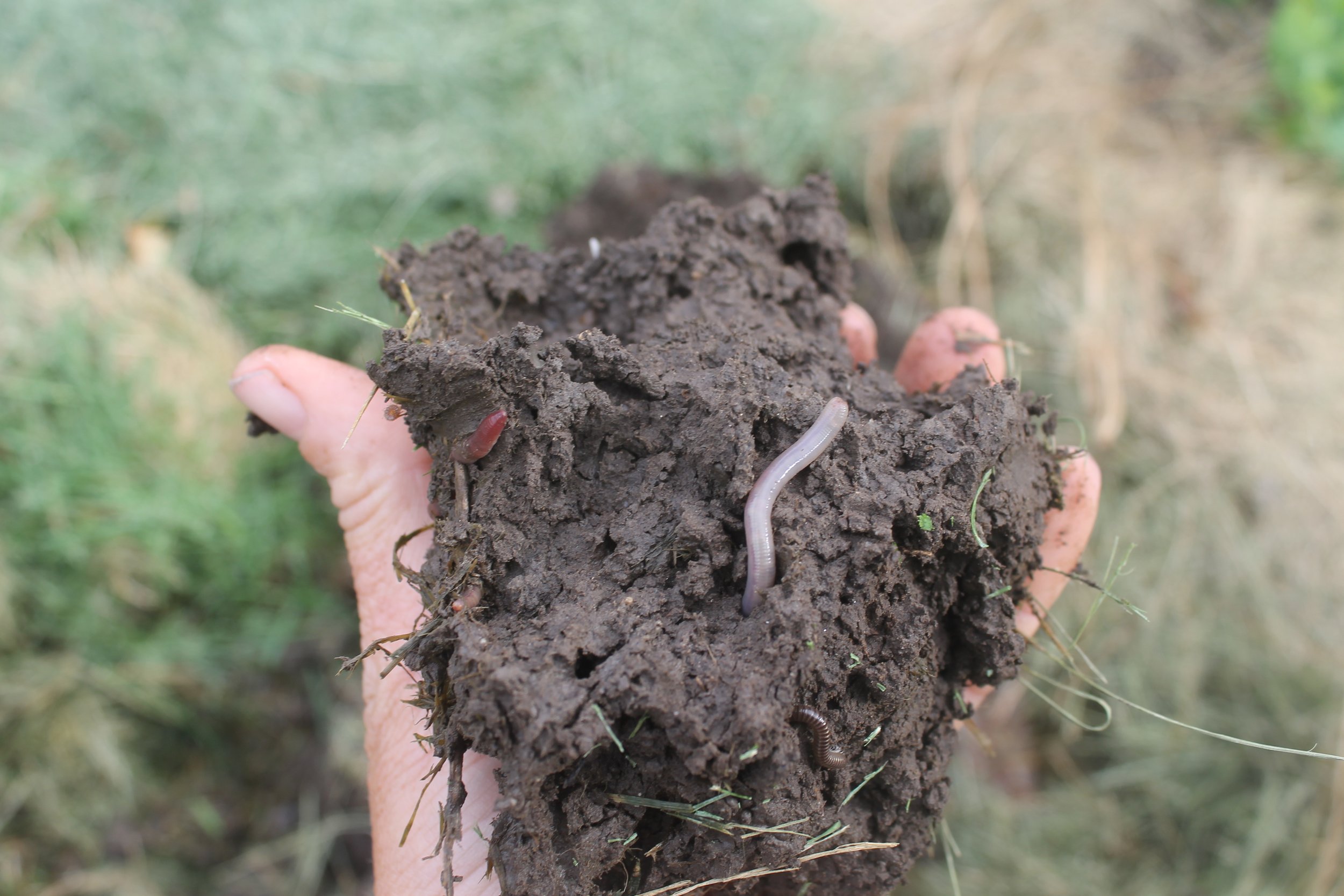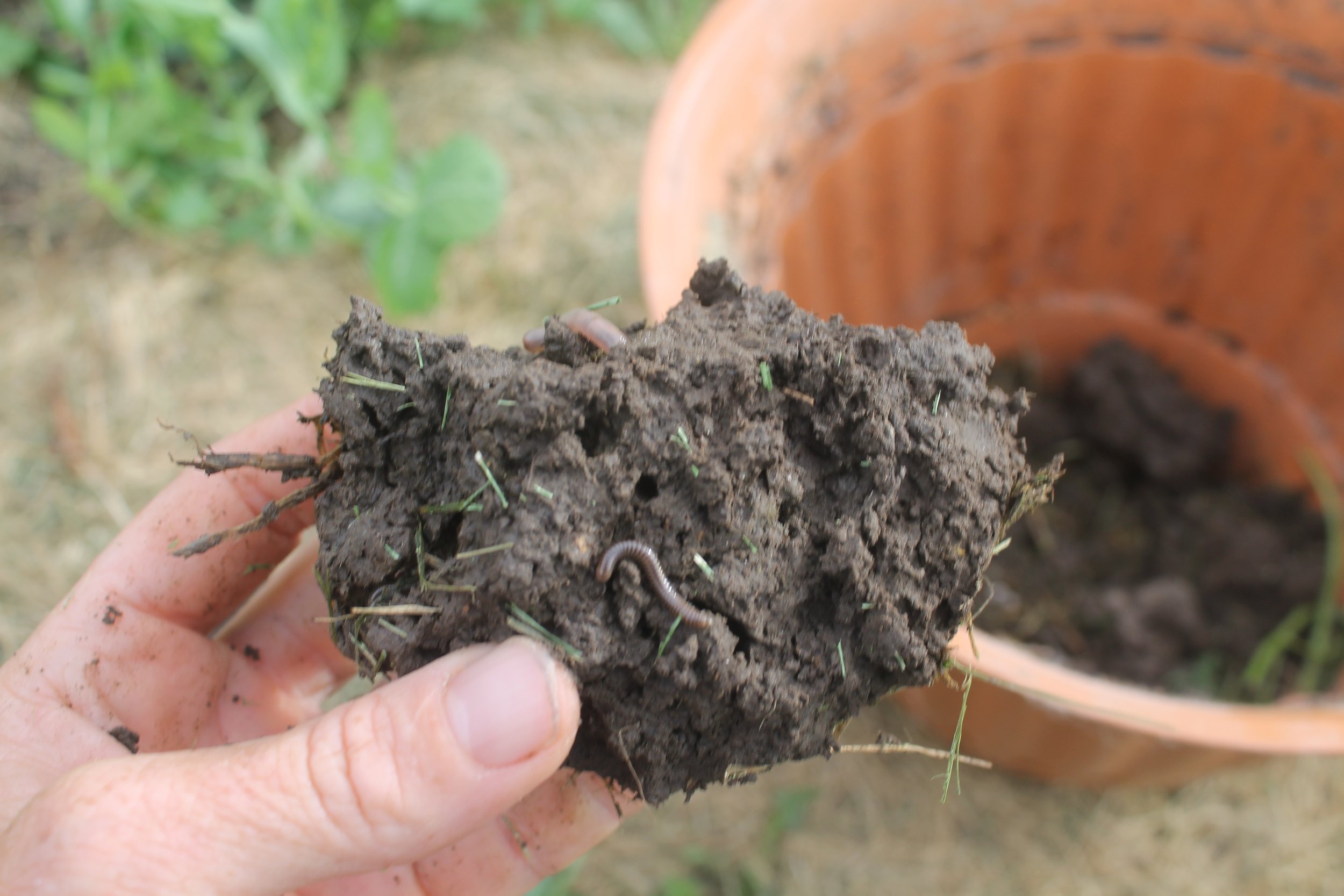Soil Health & Drought Resiliency
The cold temps retain the snow laying on the ground while we actively hope for much, much more. But as the possibility of the rare Triple-dip La Nina lingers over the next several months, my mind wanders back to the challenges of severe drought over the past few years. Something that gets lost in the fray of very visual, historically low river flows is the impact of soil moisture levels on watershed health. Wanting to learn more, I reached out to a soil health specialist with NRCS up in Great Falls. Marni Thompson graciously agreed to share some thoughts on how to improve soil health and by doing so, improve drought resiliency and watershed health. Keep in mind, many of our local ranchers are actively involved in managing their operations based in this knowledge and utilizing techniques to preserve and improve soil health to the benefit of the whole watershed. Enjoy!
Improving Soil Health for Drought Resiliency
Marni Thompson - NRCS State Soil Health Specialist
Soil health, regenerative ag, holistic management – no matter what you call this operational system – it’s not just a buzz word. We often hear about soil health and see it in magazines in conjunction with cover crops, but what is it and how can it be achieved?
The answer to soil health is looking at nature and replicating that to the extent possible on rangeland, pastureland, hay land, and cropland. There are 5 principles that we can see in nature that directly impact soil health.
1. Maximize soil cover
2. Minimize disturbance
3. Maximize diversity
4. Maximize living roots
5. Incorporate livestock
Soil health starts with a plant growing in the soil. Plants take energy from the sun and convert around 40 percent of that energy into a sugar that is released through its roots. The sugar attracts the biology in the soil. In exchange for that sugar, soil microbes give the plant the nutrients and water it needs to survive. Soil biology also produces a glue that binds soil particles together to make soil aggregates. In between these aggregates are pore spaces that store water. If these aggregates break down, water infiltration and storage is severely limited. In short, soil health is about making sure that there is a functional home for the biology so they can perform these functions for the plants and soil.
Bare soil amplifies drought and the breakdown of soil health. It can be harder to quickly increase soil cover in our brittle Montana environment than in places with more precipitation, but it is one of the most important principles to work on. If the soil is bare, there is no plant providing food to the biology or residue providing cover for shade and protection from wind. Bare soil increases soil temperature. With the increase in temperature, water stored in the soil is lost to the environment, and soil biology dies. Nature does not like bare soil and tries to cover it with a “band-aid” which is usually a plant that we don’t want - WEEDS.
There are many ways to increase cover on soil on all land uses. On cropland, incorporate no-till, add high carbon crops to the rotation like small grains or cover crops, and harvest grain with stripper header. On grazing land, high stock density grazing can be a huge benefit to increase production which eventually leads to more soil cover. On hay land, incorporate grazing periodically instead of haying or bale grazing. Bale grazing is a new and innovative practice and where you feed the hay, usually round bales, in areas of low organic matter. The combination of manure, urine, and the addition of residue from the hay drastically increases production and quality in those area.
Soil biology is very susceptible to disturbance. Disturbance can be characterized as chemical disturbance such as pesticide and fungicide or physical disturbance in the form of tillage. This principle is maintained on native rangeland and pastureland but can be improved on cropland and hay land. Tillage dries the soil, destroys soil structure, and ruins the home of the biology. In an environment where we need to save every drop of water we get, this can impact drought resiliency.
Lewis and Clark observed over 150 different plants on the native range during their expedition. All those different plants with different root systems release different sugars to attract a diversity of biology. This diversity of biology keeps the soil in balance and makes it function to store water and nutrients for plants. Think of the biology in the soil like the biology in our stomachs. When the different types of microbes are out of balance, we get sick. The same happens with the soil. In our pastures, hay land, and cropland, we typically plant monocultures of plants compared to 150 species that originally grew there. This affects the ability of the biology in the soil to cycle nutrients and impacts water infiltration.
It all starts with having a living root in the soil to provide food for the biology. Without functioning roots, soil biology starves and starts eating organic matter to survive. When soil organic matter decreases, the ability of the soil to store water drastically decreases. For every percent of organic matter present in soil, 20,000 gallons of water is stored per acre. If our soils are healthy, they are more drought resilient.
In nature, soils have always been grazed by livestock or wildlife. Grazing in an appropriate manner helps cycle the nutrients faster, feeding soil microbes. Livestock graze plants and provide nutrients back to soil biology and plants with manure and urine. Without livestock, nutrients aren’t cycling.
In agriculture, the challenge is finding ways to incorporate the five soil health principles on all land uses to the extent possible. Unfortunately, improving soil health can take more time in Montana that other locations due to the lack of moisture. However, it is not impossible and many farmers and ranchers around the state are making drastic improvements. These improvements are usually coupled with a decrease in inputs, which makes the operation more economically sustainable. Some of the common practices that improve the soil include grazing management that allows for plant recovery; no-till planting; a diverse crop rotation; diverse, perennial seedings; bale grazing; and cover crops.
The lack of these principles can have big impacts on watersheds like the Big Hole. For example, if the land in the watershed has barer ground than it should it affects the ability of the soil micro-organisms to form soil aggregates. This happens because the soil temperatures on bare ground gets too hot for the micro-organisms and where there is bare soil there is a lack of food for the micro-organisms. With less soil aggregates the soil’s ability to infiltrate water is affected so more water runs off, taking bare soil with it, which eventually leads to reduced soil on the land and increased sedimentation in the river. If the water is running off, it isn’t being stored in the soil for plants to use when it starts to get hot and dry. This in turn makes the land less resilient to drought. If the land in the watershed is dominated by monocultures there is less diversity in the soil biology. This also affects the ability of the biology to form soil aggregates which directly affects the soil’s ability to store water. The ability of a watershed to function as it should is quite connected to the life in the soil.





